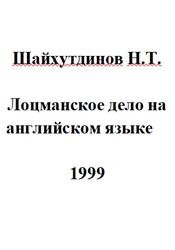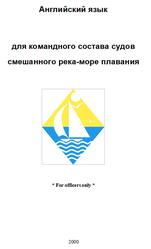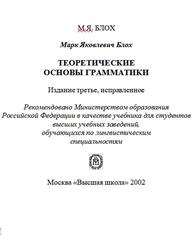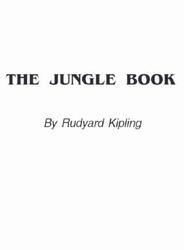Writing the history of any language is a daunting task. The question is often not what should be placed in the work as what needs to be left out. This task becomes more daunting when dealing with a language, like Scots, which is patchily recorded at times and is used by all speakers alongside a much more overtly prestigious and closely related language. As I say below, therefore, I made the decision early on that I would separate (wherever this is possible) the sociolinguistic from the linguistic history of Scots. It may be that readers find this unwieldy; at times at least they are likely to be right. In my view, however, to attempt to provide a single (and apparently seamless) narrative for both aspects of change may be factitious on this occasion.
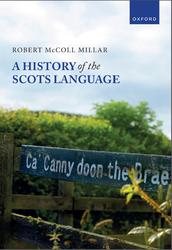
The dialects of Scots.
Scots is, as we have seen, essentially unstandardized at present. It is made up of a range of often very different dialects, each of which at least in theory is equal in status to all the others (Map 1.1). Outside Scotland there may be less of an awareness of this diversity, since population centres in the (urban) Central dialect areas tend to dominate in the broadcast media (as well as the varieties of Scots you are likely to meet unless you have direct access to the Northern or Insular dialects). In the following section we will quickly consider the different contemporary dialects of the language. This will be of some importance to the in-depth discussion of usage in the following chapters.
The following distinctions are largely phonological in nature; some lexical differences will also be provided, however. They are based on the discussion in my 2018 book, itself derived from the work of a range of authorities. It must be borne in mind throughout that what are illustrated here are in many ways idealizations. Local variation within these large-scale units is considerable; all speakers of the different varieties generally write in Standard English and often approach it in speech according to the linguistic continuum discussed at the beginning of this chapter.
Contents.
Preface Acknowledgements List of Maps, Figures, and.
Tables 1. What is Scots?.
1.1 The daily linguistic commute’.
1.2 Attitudes and history.
1.3 An interpretation of its nature.
1.4 The sociology of language.
1.4.1 What do we mean by language?.
1.4.2 Ausbau revisited: Standardization.
1.4.3 Is an adequate sociolinguistic definition for Scots possible?.
1.5 The dialects of Scots.
1.6 Historical periodization.
1.7 The ecology.
1.7.1 Northern Isles.
1.7.2 Ulster.
1.7.3 Urban and rural.
1.8 The book to come.
2. Historical and linguistic backgrounds: The Germanic languages, Old English, and the pre-Scots period.
2.1 Introduction.
2.2 Languages in prehistory.
2.3 Indo-European and its descendants.
2.3.1 The Germanic languages.
2.4 Old English dialects.
2.5 Middle English dialects.
2.6 Conclusion.
3. ‘Rise’: Scots in the Medieval and Early Modern periods.
3.1 Scotland before Scots.
3.2 Bernicia.
3.3 A united kingdom.
3.3.1 Gaelic and the Church.
3.4 The creation and spread of Inglis.
3.5 Formation of Inglis.
3.6 The Wars of Independence and their aftermath.
3.6.1 Scots and Gaelic in long-term cohabitation: The development of the Northern dialects.
3.6.1.1 The Gaelic ‘fringe’ and the development of Scots: An excursus.
3.7 Growth of writing in Inglis.
3.8 The literary road: The apex of Scottis.
3.8.1 Scottis.
3.9 Standardization and lexical change.
3.10 Conclusion.
4. Scots in decline? The Modern Age.
4.1 ‘Decline and fall’?.
4.2 Sixteenth-century crisis.
4.3 Union.
4.4 Anglicization of writing.
4.5 ‘Improvement’ and Anglicization in writing and speech.
4.6 ‘Vernacular Revival’.
4.7 The middle classes and language use in the eighteenth century.
4.8 Scottish Standard English.
4.8.1 Language attitudes and the rise of Scottish Standard English.
4.9 A dialectalized language in an urbanized country.
4.10 Urban Scots.
4.11 Scotland: Language in the twentieth century.
4.11.1 Lessening of speaker numbers.
4.11.2 Literary use.
4.11.3 Language activism.
4.12 Downfall?.
4.12.1 A ‘between language’: Homogenization within colloquial English?.
4.13 Scots in Ulster.
4.14 Conclusion.
5. Historical phonology of Scots.
5.1 Introduction: How possible is it to produce a coherent historical phonology for Scots?.
5.2 Problems of interpretation; resources to aid comprehension.
5.2.1 Problems with comparing Scots and English historical phonology.
5.2.2 Lexical sets.
5.2.2.1 Competing systems?: Aitken vs Johnston-Millar.
5.3 Historical changes best described as unitary processes.
5.3.1 The Scottish Vowel Length Rule.
5.3.2 Great Vowel Shift(s).
5.4 Scots vowels: An historical description.
5.4.1 How far back should we trace the history of Scots phonology as an independent entity?.
5.4.2 Changes in the vowel system of Old English.
5.4.2.1 The Old English sound system: Germanic background and dialectal diversity.
5.4.2.2 Pre-Scots phonology and its Old English ancestry.
5.5 The development of the Scots vowel system: Word sets.
5.5.1 Modern Scots front vowels.
5.5.1.1 BUIT (Aitken vowel 7).
5.5.1.2 MEET (Aitken vowel 2).
5.5.1.3 BEAT (Aitken vowel 3).
5.5.1.4 MATE-HAME (Aitken vowel 4).
5.5.1.5 BAIT (Aitken vowel 8).
5.5.1.6 KIT (Aitken vowel 15).
5.5.1.7 DRESS (Aitken vowel 16).
5.5.1.8 TRAP (Aitken vowel 17).
5.5.2 Modern back or fronted from back vowels.
5.5.2.1 О ОТ (Aitken vowel 6).
5.5.2.2 STRUT (Aitken vowel 19).
5.5.2.3 COAL (Aitken vowel 5).
5.5.2A CAUGHT and COT.
5.5.3 Modern diphthongs.
5.5.3.1 TRY and BITE (Aitken vowel 1).
5.5.3.2 ОWER (Aitken vowel 13).
5.5.3.3 CHOICE/LOIN (Aitken vowels 9 and 10).
5.5.3.4 NEW (Aitken vowel 14ab).
5.6 The history and development of the consonants of Scots.
5.6.1 Consonant clusters.
5.7 Conclusion.
6. Historical morphosyntax of Scots.
6.1 ‘But Scots and English are the same language: They have the same grammar!’.
6.2 Morphosyntactic development in Old English and its Germanic ancestors.
6.2.1 The Old English verb.
6.2.2 Element order.
6.3 Morphosyntactic ‘rationalization’ in the post-Old English period.
6.4 The historical development of the morphosyntax of Scots in depth.
6.4.1 The noun phrase.
6.4.1.1 Article system.
6.4.2 Pronouns.
6.4.2.1 Personal pronouns.
6.4.2.2 Demonstrative pronouns.
6.4.2.3 Relative and interrogative pronouns.
6.4.3 Adjectives.
6.5 The verb.
6.5.1 Verb inflections.
6.5.1.1 The Northern present tense rule.
6.5.1.2 Past tense marking.
6.5.1.3 Weak verb endings.
6.5.2 Modality.
6.5.2.1 Double modals.
6.6 Changes in expressing aspect.
6.6.1 Present participle and the development of verbal expression of progressive aspect.
6.6.1.1 be + and/in progressive.
6.6.2 dae-periphrasis.
6.7 Verb negation.
6.8 Conclusion.
7. Historical development of Scots lexis.
7.1 Introduction.
7.2 ‘Native’ and borrowed.
7.2.1 ‘Native’ lexis.
7.2.2 Non-native vocabulary.
7.2.2.1 Borrowings from French.
7.2.2.2 Latin and other classical languages.
7.2.2.3 Other Romance languages.
7.2.2.4 Borrowings from the North Germanic languages.
7.2.2.5 Dutch and Low German.
7.2.2.6 Gaelic.
7.3 Semantic fields and change in Scottish lexis.
7.4 Distribution of lexical material across space.
7.5 Lexical attrition.
7.6 Conclusion.
8. Concluding remarks.
8.1 What needs further research?.
Endnotes.
References.
Index.
Бесплатно скачать электронную книгу в удобном формате, смотреть и читать:
Скачать книгу A History of the Scots Language, Millar R.M., 2023 - fileskachat.com, быстрое и бесплатное скачивание.
Скачать pdf
Ниже можно купить эту книгу, если она есть в продаже, и похожие книги по лучшей цене со скидкой с доставкой по всей России.Купить книги
Скачать - pdf - Яндекс.Диск.
Дата публикации:
Хештеги: #учебник по английскому языку :: #английский язык :: #Millar
Смотрите также учебники, книги и учебные материалы:
Следующие учебники и книги:
 English for everyone junior, 5 words a day, 2021 — English for Everyone Junior: 5 Words a Day is a vocabulary book for children that teaches and tests more than … Книги по английскому языку
English for everyone junior, 5 words a day, 2021 — English for Everyone Junior: 5 Words a Day is a vocabulary book for children that teaches and tests more than … Книги по английскому языку Optimise, Student s book, Premium pack, B1, Mann M., Taylore-Knowles S. — Фрагмент из книги. Some verbs or phrases are usually followed by either the -ing form of the verb, the full … Книги по английскому языку
Optimise, Student s book, Premium pack, B1, Mann M., Taylore-Knowles S. — Фрагмент из книги. Some verbs or phrases are usually followed by either the -ing form of the verb, the full … Книги по английскому языку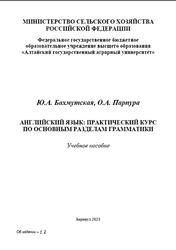 Английский язык, Практический курс по основным разделам грамматики, Бахмутская Ю.А., Парпура О.А., 2023 — Учебно-теоретическое издание состоит из восемнадцати грамматических разделов, содержит тренировочные упражнения и контрольные работы, контрольное задание, библиографический список. Основная его цель … Книги по английскому языку
Английский язык, Практический курс по основным разделам грамматики, Бахмутская Ю.А., Парпура О.А., 2023 — Учебно-теоретическое издание состоит из восемнадцати грамматических разделов, содержит тренировочные упражнения и контрольные работы, контрольное задание, библиографический список. Основная его цель … Книги по английскому языку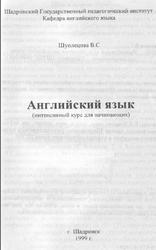 Интенсивный курс обучения английскому языку для начинающих, Шуплецова В.С., 1999 — Данное учебное пособие предназначено для студентов 1-го курса английского отделения факультета иностранных языков в период организации вводно-фонетического курса на начальном … Книги по английскому языку
Интенсивный курс обучения английскому языку для начинающих, Шуплецова В.С., 1999 — Данное учебное пособие предназначено для студентов 1-го курса английского отделения факультета иностранных языков в период организации вводно-фонетического курса на начальном … Книги по английскому языку
Предыдущие статьи:
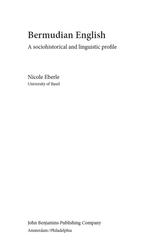 Bermudian English, A sociohistorical and linguistic profile, Eberle N., 2021 — While Bermuda is one of the oldest continuously inhabited British overseas territories with a rich 400-year history, it is also … Книги по английскому языку
Bermudian English, A sociohistorical and linguistic profile, Eberle N., 2021 — While Bermuda is one of the oldest continuously inhabited British overseas territories with a rich 400-year history, it is also … Книги по английскому языку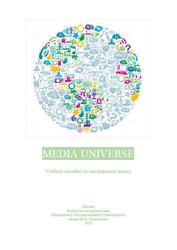 Media Universe, Английский язык, Краснова Т.В., Акчурина А.Р., Фирсова С.Д., 2023 — Учебное пособие Media Universe предназначено для обучающихся факультетов журналистики, владеющих английским языком на уровне не ниже В1, и направлено на … Книги по английскому языку
Media Universe, Английский язык, Краснова Т.В., Акчурина А.Р., Фирсова С.Д., 2023 — Учебное пособие Media Universe предназначено для обучающихся факультетов журналистики, владеющих английским языком на уровне не ниже В1, и направлено на … Книги по английскому языку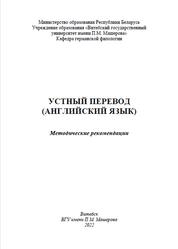 Устный перевод, Английский язык, Методические рекомендации, Бобрикова Е.П., 2022 — Методические рекомендации составлены в соответствии с программными требованиями, включают аутентичные материалы коммуникативно-аналитического характера. Данное учебное издание предназначено для студентов III … Книги по английскому языку
Устный перевод, Английский язык, Методические рекомендации, Бобрикова Е.П., 2022 — Методические рекомендации составлены в соответствии с программными требованиями, включают аутентичные материалы коммуникативно-аналитического характера. Данное учебное издание предназначено для студентов III … Книги по английскому языку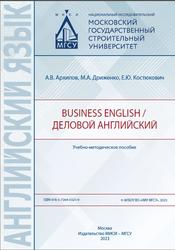 Business English, Деловой английский, Архипов А.В., Дриженко М.А., Костюкович Е.Ю., 2023 — В учебно-методическом пособии содержится теоретический материал по устной и письменной деловой коммуникации, а также упражнения для его отработки. Для обучающихся … Книги по английскому языку
Business English, Деловой английский, Архипов А.В., Дриженко М.А., Костюкович Е.Ю., 2023 — В учебно-методическом пособии содержится теоретический материал по устной и письменной деловой коммуникации, а также упражнения для его отработки. Для обучающихся … Книги по английскому языку

